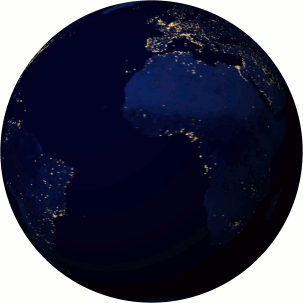Sun Goes Spotless for 6th Time in 2016 Solar Wind Above 650km/s Continues to Blow
- Hlias Frgks
- Dec 10, 2016
- 2 min read

NASA images showed that the sun has gone "blank" without any sunspots for the sixth time this year.
The blank sun is a sign that the next solar minimum is approaching and there will be an increasing number of spotless days over the next few years.
As SpaceWeather put it: "Right now the pendulum is swinging toward low sunspot numbers. Forecasters expect the cycle to hit rock bottom in 2019-2020. Between now and then, there will be lots of spotless suns. At first, the blank stretches will be measured in days; later in weeks and months. The current blank spell is the 6th such interval of 2016, so far."
Last year, Professor Valentina Zharkov said that in the 2030s, the sun's activity could plunge by 60%, leading to the next mini Ice Age. It would lead to crop failures as well as other disasters on the planet.
She said: "I am absolutely confident in our research. It has a good mathematical background and reliable data, which has been handled correctly. In fact, our results can be repeated by any researchers with the similar data available in many solar observatories, so they can derive their own evidence of upcoming Maunder Minimum in solar magnetic field and activity."
The Maunder Minimum began in 1645 and went on till 1715. That was called the Little Ice Age and even became well-known because of the winter frost fairs that became popular on the frozen surface of the Thames. The next solar minimum phase is expected to take place around 2019 or 2020.
THE SUN GOES BLANK AGAIN DURING THE WEAKEST SOLAR CYCLE IN MORE THAN A CENTURY http://www.vencoreweather.com/blog/2016/6/23/1015-am-the-sun-goes-blank-again-during-the-weakest-solar-cycle-in-more-than-a-century

G1 Watch still in effect
G1 (Minor) geomagnetic storm levels were observed at 2050 UTC (3:50 pm ET) on 09 December due to coronal hole high speed stream effects. The G1 warning has expired but the G1 Watch remains in effect for the remainder of 10 December.
Solar Wind Speed: 636 km/sec Solar Wind Magnetic Fields: Bt 6 nT, Bz -1 nT http://www.swpc.noaa.gov/

Large Coronal Hole:
SOLAR WIND CONTINUES TO BLOW For the third day in a row, a fast-moving stream of solar wind is blowing around Earth. Wind speeds in excess of 650 km/s are disturbing our planet's polar magnetic field and causing auroras to dance around the Arctic Circle.
NOAA forecasters estimate a 20% chance of G1-class geomagnetic storms on Dec. 10th. Arctic auroras do not require full-fledged geomagnetic storming and will almost certainly reappear tonight as the solar wind continues to blow. http://www.spaceweather.com/
Clips, images credit: NOAA/SWPC, ESO, ESA/HUBBLE & NASA








Comments